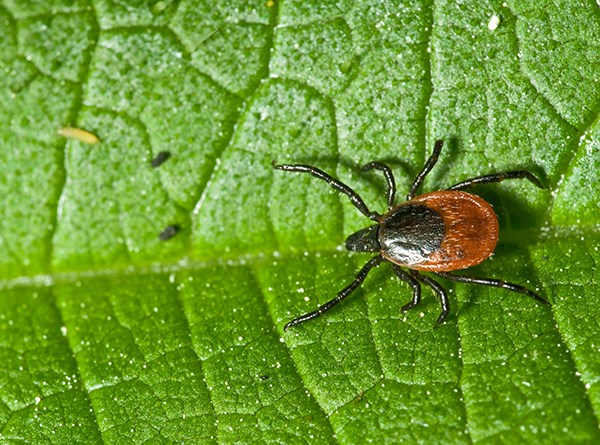The first case of tick paralysis ever recorded in a wild animal was identified on the Sunshine Coast recently with the help of the Gibsons Wildlife Rehabilitation Centre.
Hikers on a trail near Burnett Road in March found a snowshoe hare seemingly paralyzed from the waist down. The rabbit was brought to the centre, where Clint and Irene Davy examined it and found engorged ticks feeding on the animal’s neck.
The ticks were removed and the animal was placed in a kennel and allowed to rest, but it soon stopped breathing and died.
The Davys were unsure what had happened, but because they were already involved in a tick study being done by Ontario-based researcher John D. Scott, they sent the ticks off to Scott for examination.
After about 100 hours of examination and research, Scott surmised the western blacklegged ticks sent in caused the snowshoe hare to become paralyzed and led to its death.
“During tick feeding, Ixodes pacificus (black-legged tick) females expel neurotoxins which impede the electrical conductivity at nerve endings. Consequently, brain signals fail to reach body parts. In this case, the snowshoe hare could not propel itself,” Scott said.
“Based on clinical and laboratory findings, we concluded this snowshoe hare had tick paralysis. In this case of tick paralysis, the engorged ticks had been feeding for at least four days. If ticks are removed sooner after attachment, tick paralysis can normally be reversed.”
While this is the first reported case of tick paralysis in a wild animal, Scott said tick paralysis has been found in pets and people in the past. He cautions residents within the region to be careful when out in the woods or grassy areas.
In addition to tick paralysis, Lyme disease has been found in ticks on the Sunshine Coast and Sea to Sky Corridor. Squamish’s late Dr. LaVerne Kindree was a pioneer in the research of ticks that carried Lyme disease in B.C. Between 1989 and 1994 Dr. Kindree was part of a study that confirmed the existence of Lyme disease in B.C. That forced the provincial health authorities to acknowledge that the disease was in B.C., which in turn made it easier and more common for doctors to test and treat patients.
Lyme disease can attack different organs, joints and the nervous system if not treated with antibiotics soon after infection.
– with files from Rebecca Aldous



